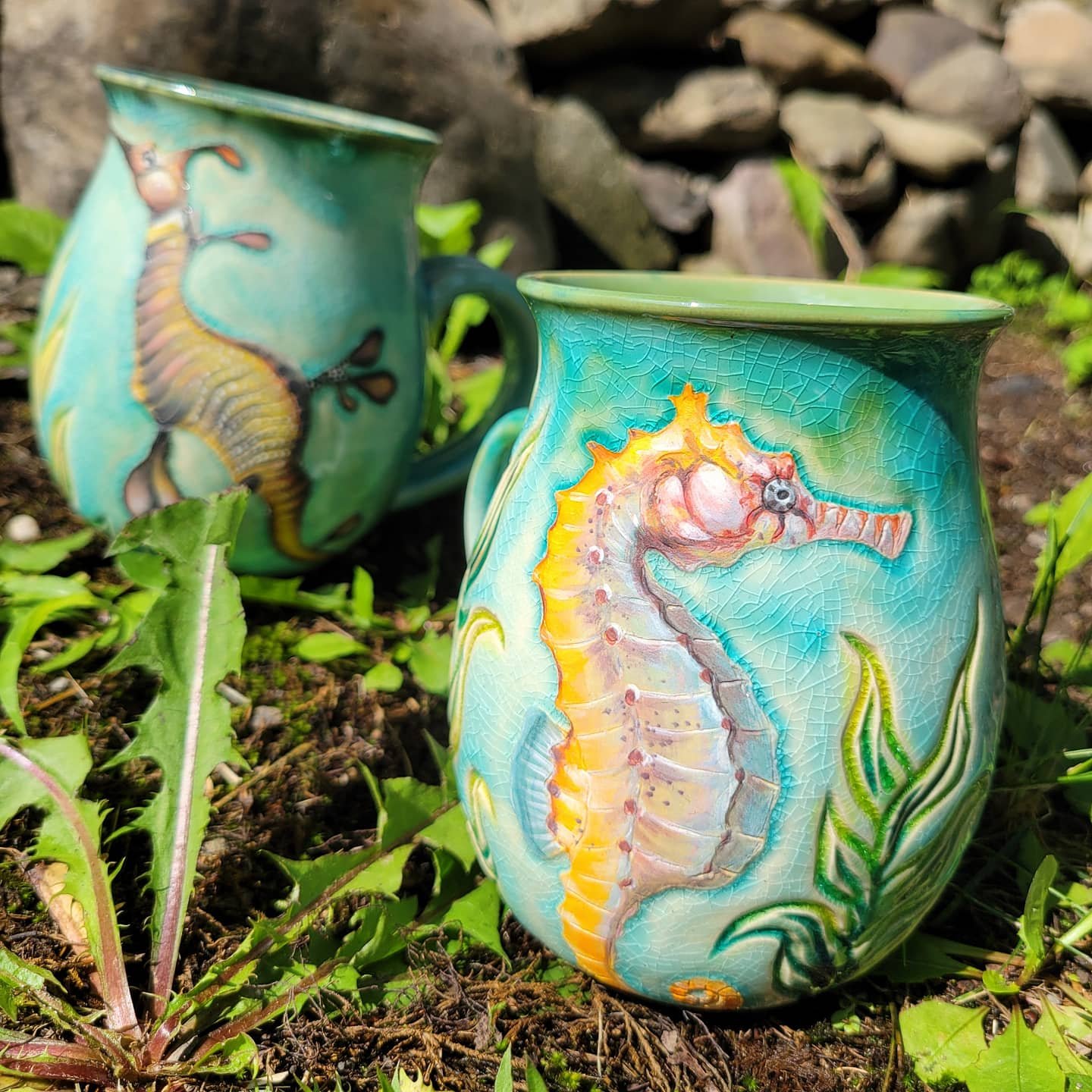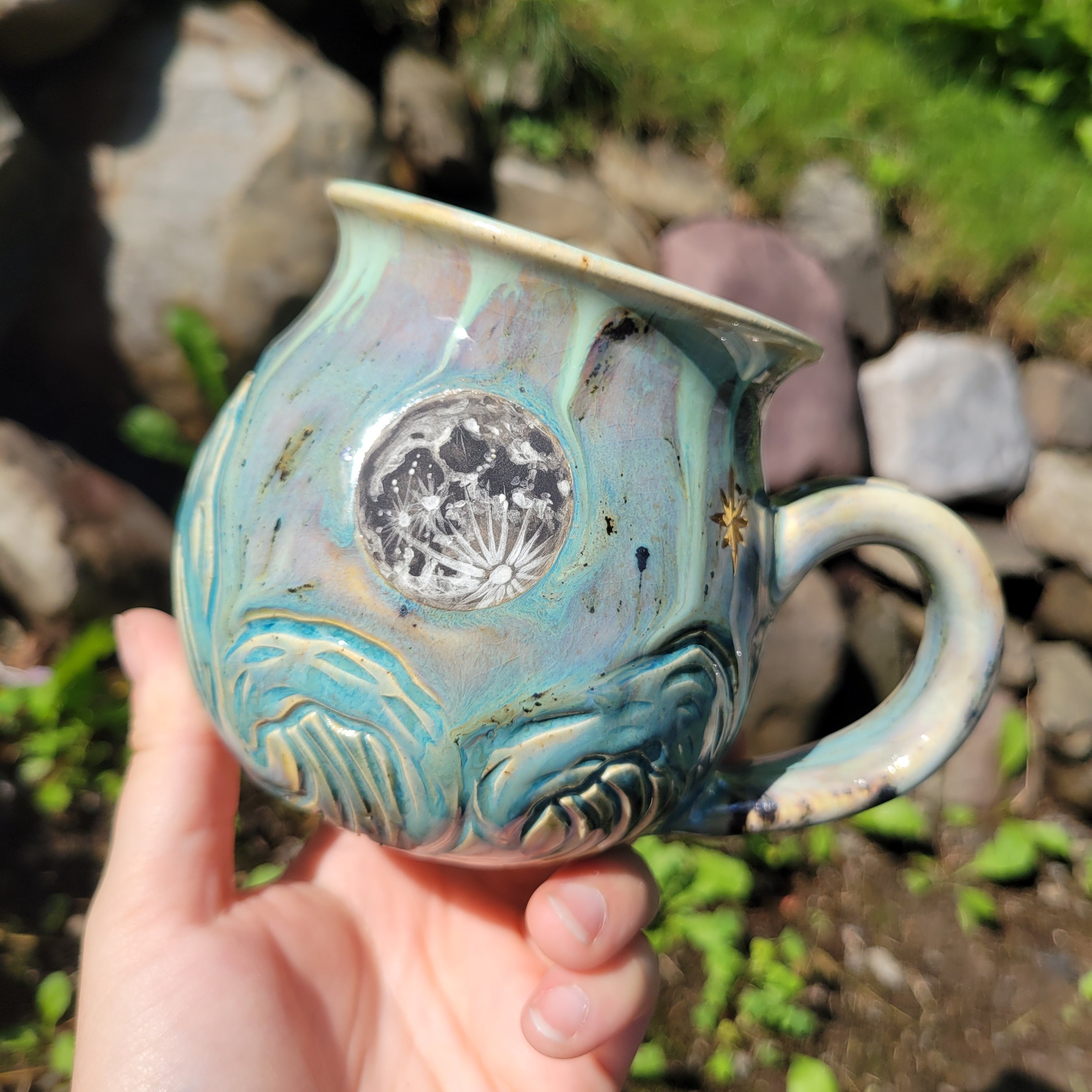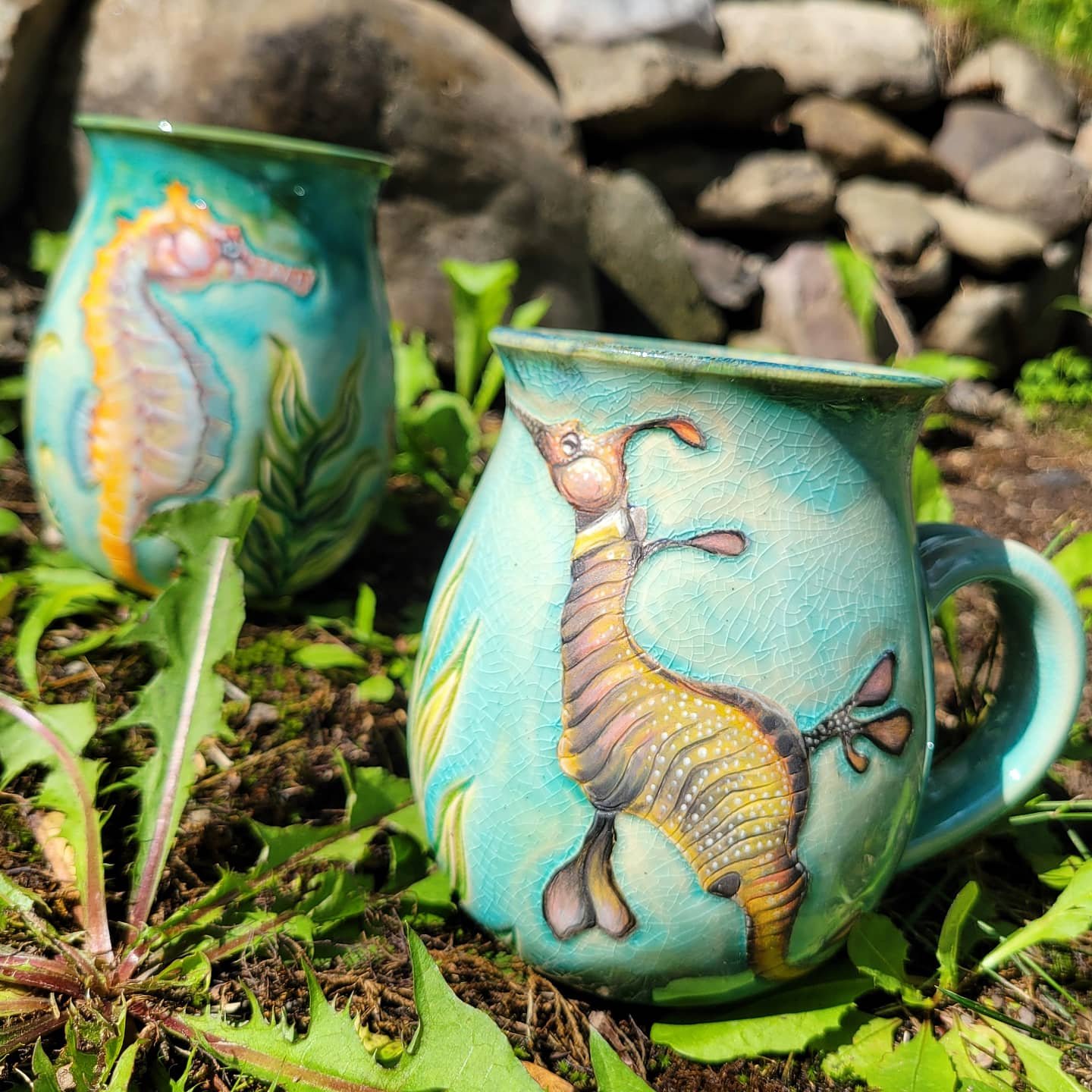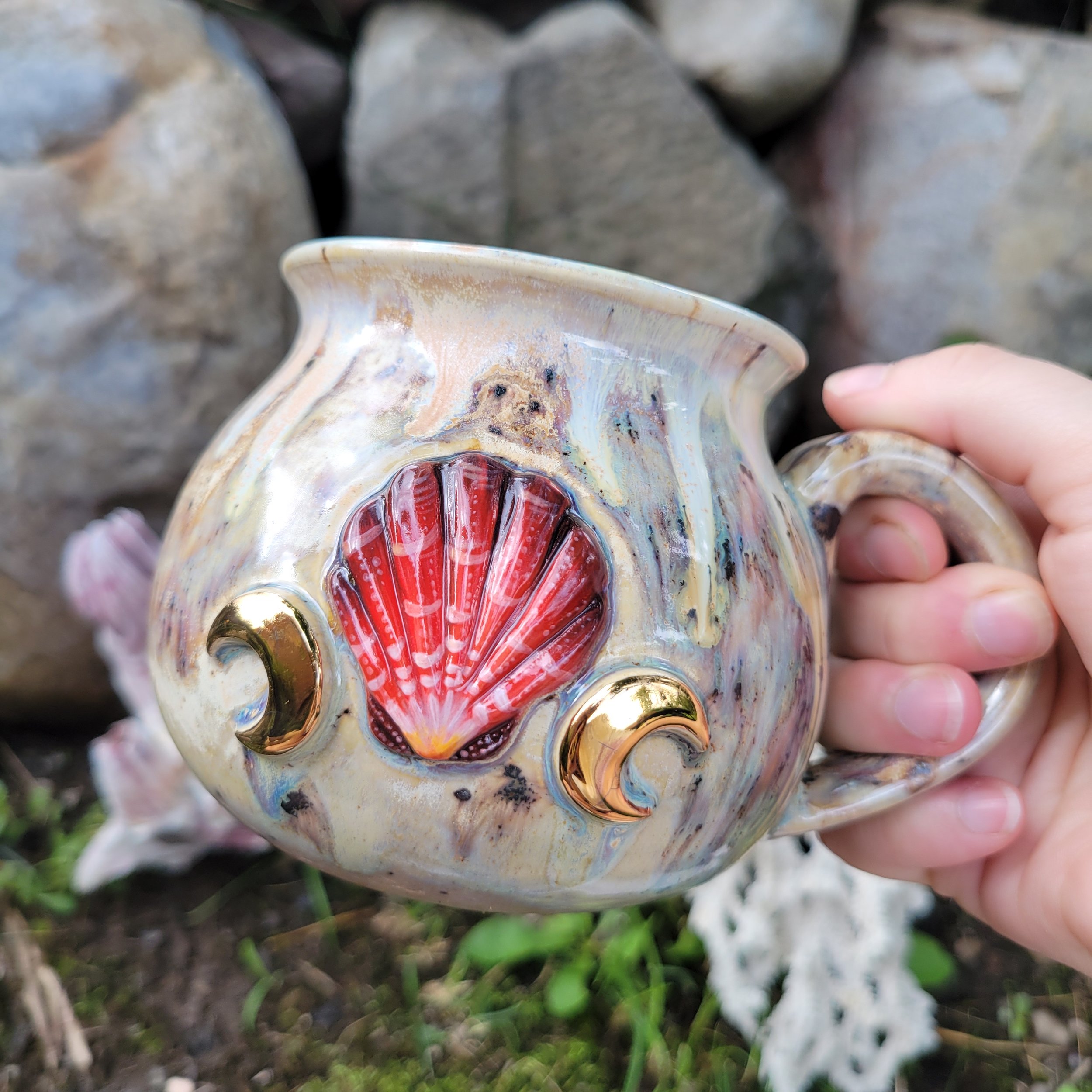SEAHORSES
July 2021
One of my first memories of a seahorse was at Ripley’s Believe it or Not Aquarium. I was going to each tank with amazement. But the one animal that I couldn’t stop staring at was a weedy sea dragon. Much like the dragon in the image above (bottom right corner). I was mesmerized by the fact that this creature that looked like was pulled from a story book was real, alive, in front of me! From then on, all species of seahorses were held high on my list of favorite animals.
Summer of 2021, I realized I haven’t created a collection based off the ocean yet. Which threw me for a loop because the ocean makes up a majority Earth. I had to show my gratitude for sea life. I took my love of seahorses and brought it to life through art.
Many of the seahorse mugs have carved coral and seaweed. With the seahorses I also created seashell and sand dollar mugs. I am fascinated by the effect of the moon has on water, so I came up with tide mugs - waves along the bottom with a full moon.
Because our oceans are threatened by so much exploitation, pollution, and global warming, I decided to auction a tide mug to make a donation to Sea Shepherd - an international direct ocean conservation movement. They help conserve the ocean by defending illegal exploitation and environment destruction. Together we raised $180.





Seahorse facts-
Seahorses are master of camouflage by changing color and evolving to their surroundings. So much so that there are species that have yet to be discovered becasue we ca’t see them!
Most seahorses live on the same reef for life.
They can live up to 3 years in the wild.
Seahorses have no stomachs so they must eat constantly becasue their food moves quickly through their digestive track.
Seahorses are considered one of the slowest sea creatures, swimming only 5 feet per hour.
Baby seahorse drift with the sea current until they land at their own reef. Most do not survive the journey.
Seahorses have few predators because they are so boney making them undesirable as prey.
Female seahorses dominate over the males. Their territory consists of 100 square meters of the reef.
Only 1 of 1,000 seahorses taken from the sea survive life in a tank.

